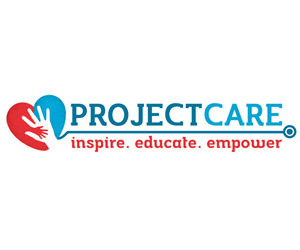From ideas on objects for fidgety fingers and use of colour and lights to shape behaviour, to tips on getting your loved ones to help prepare meals, the Hack Care guide provides caregivers of persons with dementia with creative and practical ways to improvise and improve their living environment. The guide which is contrary to the common “heck care” euphemism was launched during World Alzheimer’s Month which falls in September.
Styled like an IKEA catalogue with online instruction manuals, the 240-page Hack Care presents a visual compendium of more than 50 hacks and tricks, essays and stories to make the home a friendlier place for those living with dementia and help their caregivers cope with the daily challenges of caregiving, as well as improve the public’s understanding of dementia. The book takes a can-do, DIY approach to inspire and encourage caregivers to come up with their own hacks that are suited to their homes and personal needs. The aim is to help keep their loved ones with dementia engaged, empowered and enabled to age-in-place for as long as possible.
Hack Care is commissioned by Lien Foundation, who roped in research and design agency, Lekker Architects, as well as industrial design consultancy studio, Lanzavecchia + Wai Design Studio. Professionals from Alzheimer’s Disease Association (ADA), Brahm Centre and Khoo Teck Puat Hospital who have journeyed with persons living with dementia also share their collective wisdom on the caregiving journey. One of the key themes in the guide is encouraging caregivers to take time to care for themselves.

Lee Poh Wah, CEO, Lien Foundation, said: “Living with dementia is daunting and our everyday home environments do not always anticipate or meet the unique needs of people battling cognitive and physical frailty. These challenges can be mitigated with good design that is functional, inspirational and accessible, and shaped by the shared experiences of caregivers who have been on a similar journey.”
When Lekker Architects’ director, Ong Ker-Shing was asked by Lien Foundation to collaborate on this design project, she jumped at the chance right away. Her father’s fight with dementia since 2009 and her own journey as a caregiver had impacted her deeply. She said, “At home, we observed how my father – through his decline into dementia – was incredibly responsive to changes in his environment, and more importantly, that the manipulation of this environment was really in the hands of us, his family, and not so much in the hands of architects and designers.” She realised that many caregivers like herself were constantly hacking, either through ideas of their own, or in consultation with others.
While Hack Care is an independent initiative, the team behind the book chose to use IKEA products for their accessibility and ease of use. They took a playful leaf from the IKEA catalogue and drew inspiration from the spirit behind the Swedish furniture giant’s collaboration with Queen Silvia of Sweden and a construction firm to produce “Silviabo”, a range of low-cost dementia- and disability-friendly modular housing for seniors in Sweden.
Although it is modelled after the IKEA catalogue for its familiarity and universal appeal, Hack Care is not confined to IKEA products. Instead, it presents a whole range of possibilities for caregivers that correspond to their different scales of ambition and the wide-ranging needs of persons with dementia – from larger-scale hacks like improvising the IKEA Poang chair to simple ones like camouflaging an exit door in a colour similar to its adjacent walls.
In addition, Hack Care shows how the ‘micro-worlds” or spaces in the homes for spending the day and mealtimes can be enhanced, and daily rituals like bathing and dressing can become opportunities to shape the living environment to improve the well-being of the person with dementia. For example, a shelf could be turned into a carer’s corner that organises the loved one’s care needs and items like towels, hand lotions, medication and administrative papers (using IKEA’s ALGOT scaffold). Two hangers could be arranged in sequence to separate and pre-arrange a care recipient’s outfit according to the sequence of dressing.
The Hack Care team took reference from the evidence-based Dementia Enabling Environment Principles developed by Professor Richard Fleming and Kirsty Bennett from the University of Wollongong. The team applied and translated these principles and came up with 10 of their own principles guiding the hacks in Hack Care. They include:
- Let persons with dementia play an active role.
- Encourage decision-making.
- Affirm their sense of self.
- Have simple conveniences within easy reach.
- Familiarity is comforting.
- Don’t forget the simple pleasures.
- Simplify the environment.
- Do things together.
- Stay flexible and adaptable.
- The caregiver matters.
To download a e-copy of Hack Care, go to: http://hackcare.sg. Or, you can request on the website for a physical copy – 500 copies are available to the public for free. There will be a demo of hacking ideas from Hack Care, livestreamed on Lien Foundation’s Facebook page on September 21 and 28 at 7pm.
Following this launch, the Alzheimer’s Disease International will be releasing the World Alzheimer Report on ‘Design, dignity and dementia’ on September 21, which will examine dementia-related design and the built environment globally, the progress to-date, as well as current best practices and innovations.
(** PHOTO CREDITS: Lien Foundation and Lekker Architects)














